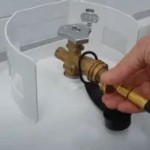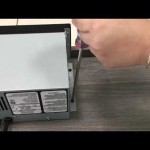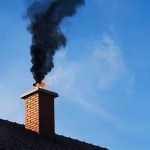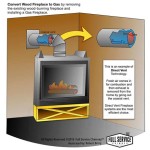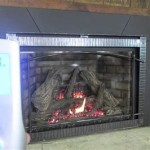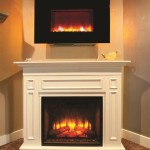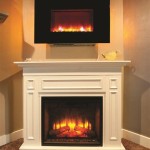The Elegance and Efficiency of Wall-Hung Direct Vent Gas Fireplaces
Wall-hung direct vent gas fireplaces represent a modern and increasingly popular heating solution for both residential and commercial spaces. Their sleek design, coupled with the efficiency and convenience of gas operation, makes them a compelling alternative to traditional wood-burning fireplaces. This article will delve into the various aspects of wall-hung direct vent gas fireplaces, examining their benefits, installation considerations, operational characteristics, and maintenance requirements.
Traditional fireplace systems often involve extensive construction, including a chimney and hearth. This can be a significant constraint, especially in existing homes or in spaces where conventional fireplace installation is impractical. Wall-hung direct vent gas fireplaces overcome this limitation by offering a vent system that exhausts combustion fumes directly through an exterior wall. This simplified venting process dramatically reduces installation complexities and associated costs, making it a more accessible heating option for a wider range of properties.
The design versatility of wall-hung direct vent gas fireplaces is another key factor contributing to their popularity. Available in a variety of styles, from contemporary linear designs to more traditional formats, these fireplaces can be seamlessly integrated into diverse interior design schemes. Manufacturers offer a range of aesthetic options, including different fuel bed materials like glass beads, ceramic logs, and river stones, as well as various frame finishes and colors. This allows homeowners to select a fireplace that complements their existing decor and reflects their personal style preferences.
Key Point 1: Understanding Direct Vent Technology
The core functionality of a wall-hung direct vent gas fireplace revolves around its direct vent system. This system distinguishes itself from other types of gas fireplace vents by drawing combustion air from outside the building and exhausting combustion gases directly outdoors through a sealed, coaxial vent pipe. This coaxial pipe consists of two concentric tubes: the inner tube exhausts the combustion gases, while the outer tube draws in fresh air for combustion.
The sealed system ensures that no combustion byproducts, such as carbon monoxide, enter the living space. This eliminates the need for a traditional chimney, making installation simpler and more cost-effective. Furthermore, the direct vent system contributes to improved energy efficiency. By drawing combustion air from outside, the fireplace does not deplete the heated air within the room, reducing drafts and maintaining a more consistent temperature. This closed-loop system also minimizes the risk of backdrafting, a potentially dangerous situation where combustion gases are drawn back into the home.
The venting process employs either a horizontal or vertical termination. A horizontal termination vents directly through an exterior wall, requiring minimal structural modification. A vertical termination vents upwards through the roof, similar to a traditional chimney, but utilizes a specialized direct vent cap designed to prevent rainwater and debris from entering the vent system.
The design of the direct vent system itself contributes to the overall safety and efficiency of the fireplace. The double-walled pipe construction provides insulation, minimizing heat loss and preventing condensation from forming within the vent. The sealed connections ensure that the vent system remains airtight, eliminating the possibility of leaks and maintaining the integrity of the combustion process.
The type of gas used, either natural gas or propane, also influences the direct vent system's design. Natural gas and propane have different combustion characteristics, requiring specific burner designs and vent configurations to ensure optimal performance and safety. It is crucial to select a fireplace model and direct vent system that are compatible with the available gas source.
Key Point 2: Installation Considerations and Requirements
While wall-hung direct vent gas fireplaces offer simplified installation compared to traditional fireplaces, proper installation is paramount for safety and optimal performance. Installation must comply with local building codes and manufacturer's instructions, and it is generally recommended to have the installation performed by a qualified HVAC technician or gas fireplace installer.
The first step in the installation process involves selecting an appropriate location for the fireplace. The chosen location must have access to an exterior wall for venting and a gas supply line. It's crucial to consider minimum clearances to combustible materials, such as walls, ceilings, and furniture. These clearances are specified by the manufacturer and must be strictly adhered to prevent fire hazards.
The installation of the direct vent system requires careful attention to detail. The vent pipes must be properly assembled and sealed to prevent leaks. The horizontal or vertical termination cap must be securely attached to the exterior wall or roof, and its placement must comply with local building codes regarding proximity to windows, doors, and other building features.
The gas supply line must be properly connected and tested for leaks. A gas shut-off valve should be installed near the fireplace for safety and ease of maintenance. The fireplace must be properly grounded to prevent electrical shock. Furthermore, carbon monoxide detectors should be installed in the vicinity of the fireplace to provide an early warning of any potential carbon monoxide leaks.
The wall to which the fireplace is mounted must be capable of supporting the weight of the unit. Reinforcement may be necessary, particularly for heavier fireplace models or walls constructed from lightweight materials. It's also essential to ensure that the wall is level and plumb to prevent the fireplace from tilting or shifting over time.
After the installation is complete, the fireplace should be thoroughly tested to ensure proper operation. This includes verifying the ignition system, burner performance, vent system integrity, and gas pressure. Any issues should be addressed immediately to ensure the safety and efficiency of the fireplace.
Key Point 3: Operation, Maintenance, and Safety
Once installed, wall-hung direct vent gas fireplaces are relatively simple to operate. Most models feature an electronic ignition system that allows for easy start-up with the push of a button or a remote control. Many units also offer adjustable flame height and heat output, providing greater control over the ambiance and temperature of the room.
Regular maintenance is essential to ensure the continued safe and efficient operation of the fireplace. This includes cleaning the glass front panel to remove soot and residue, inspecting the burner and vent system for any signs of damage or deterioration, and checking the gas connections for leaks. A qualified technician should inspect the fireplace annually to ensure that all components are functioning properly.
The frequency of cleaning depends on the usage of the fireplace and the type of fuel used. Propane fireplaces tend to produce more soot than natural gas fireplaces, requiring more frequent cleaning. It's important to use a non-abrasive cleaner specifically designed for fireplace glass to avoid scratching or damaging the surface.
The vent system should be inspected regularly for obstructions, such as bird nests or debris. Any obstructions should be removed promptly to prevent backdrafting and ensure proper ventilation. The vent pipes should also be checked for corrosion or damage, and any damaged sections should be replaced immediately.
Safety is paramount when operating a gas fireplace. Never leave a burning fireplace unattended, especially if children or pets are present. Keep combustible materials away from the fireplace to prevent fire hazards. Ensure that carbon monoxide detectors are functioning properly and that their batteries are replaced regularly.
If you smell gas, immediately turn off the gas supply to the fireplace and contact a qualified technician. Do not attempt to operate the fireplace until the leak has been located and repaired. Never use flammable liquids to start or accelerate the fire. Use only the fuel type specified by the manufacturer (natural gas or propane).
In summary, wall-hung direct vent gas fireplaces offer a combination of aesthetic appeal, ease of installation, and operational efficiency. They are a viable heating option for a wide range of spaces. Adhering to proper installation guidelines, implementing regular maintenance routines, and prioritizing safety measures will help ensure the long-term performance and safe operation of these modern fireplace systems. The benefits of direct vent technology, combined with the sleek designs of wall-hung units, make them an attractive and practical choice for homeowners seeking a stylish and efficient heating solution.

Fire Ribbon Direct Vent Slim Gas Fireplace Spark Modern Fires

Napoleon Plazmafire 48 Direct Vent Gas Fireplace Toronto Best

One6 Vf SÓlas Contemporary Fireplaces

SÓlas Twenty6 Wall Mount Direct Vent Gas Fireplace Toronto Home Comfort

Spark Fire Ribbon Direct Vent Slim Stone Inc

Napoleon Plazmafire 48 Direct Vent Gas Fireplace Hearth Stove Patio

How To Find The Most Efficient Direct Vent Gas Fireplace For Your Next Project

Orion 46 8920 Wall Mount Rusty S Fire Place Chimney

Quartz 32 Inch Direct Vent Fireplace By Majestic Fine S Gas

Napoleon Plazmafire 48 Direct Vent Wall Hanging Linear Gas Whd48 North Country Fire
Related Posts


